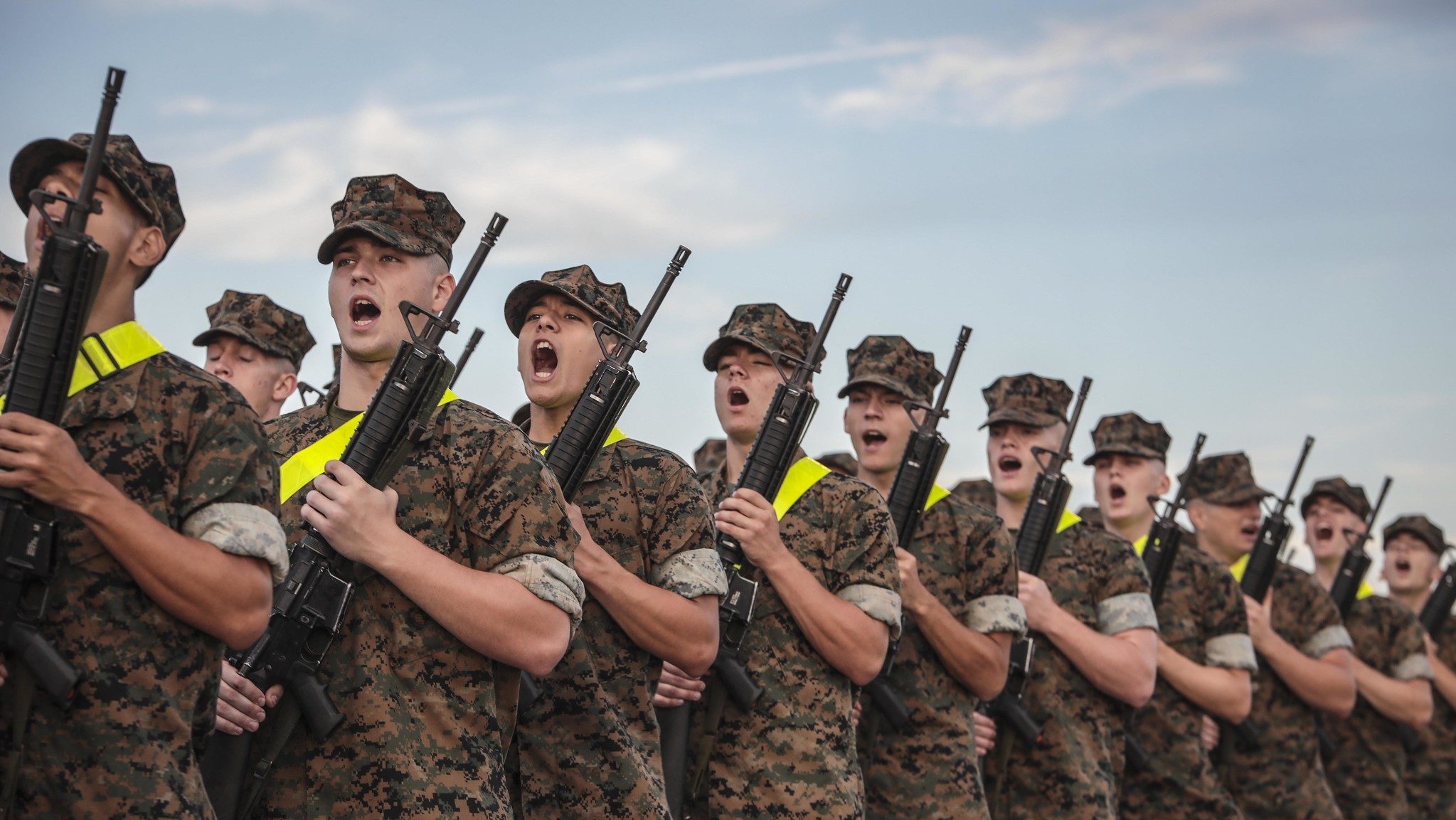

A Marine recruit going through the Corps’ West Coast boot camp was recently caught at the airport after making a dash for freedom, a Marine Corps official confirmed.
The recruit was apprehended on Monday by San Diego Harbor Police at San Diego International Airport, said Steve Posy, a spokesman for Marine Recruit Depot San Diego, California.
“The recruit was returned safely to the MCRD Provost Marshall’s Office,” Posy told Task & Purpose. “We take this matter seriously as the safety and welfare of our recruits and permanent personnel is of the highest priority. No further details will be released at this time.”
Posy did not provide the recruit’s name or any other identifying information. Nor did Posy say whether the recruit is being separated, disciplined, or forced to begin recruit training all over again.
Subscribe to Task & Purpose today. Get the latest military news and culture in your inbox daily.
Marine Corps officials could not confirm that a video shared on the unofficial Marine Corps subreddit shows the recruit being arrested at the airport. It is not known when the video was taken.
The video was posted with the caption: “Recruit from [Marine Corps Recruit Depot San Diego] made a break to the airport lmao. We all had the same idea at one point.”
Recruit escape.
byu/Bearded_Devildog inUSMC
The brief video appears to have been captured by a mobile phone. It shows several people running. Then a man being escorted by a police officer near an airport luggage carousel with his hands behind his back.
The man is wearing a green skivvy shirt, web belt, Marine pattern trousers, and unbloused boots, indicating that he may be in the early stages of recruit training. Recruits typically wear sneakers for the first two weeks of training.
No information was immediately available about how often recruits attempt to leave the Corps’ two recruit depots — the other being Recruit Depot Parris Island, South Carolina. Because Marine Recruit Depot San Diego and San Diego International Airport share a fence, it’s possible that many young recruits have dreamt of hopping over the fence and getting on a plane to take them away from the constant yelling, knife hands, and incentive training that defines boot camp. Marine Corps lore is full of tales of recruits who managed to escape from boot camp before finally being caught.
There are several reasons why a recruit can be separated, said Maj. Hector Infante, a spokesman for Training and Education Command. These reasons include:
- Defective enlistment
- Entry-level performance and conduct
- Convenience of the government
- Disability
- Commission of a serious offense
- Recruit initiated separation
The separation process at both Marine Corps recruit depots involves a recruit being interviewed by his or her company commander before a battalion commander begins administrative processing, Infante said.
At the Marine Corps’ East Coast recruit depot, if a recruit asks to be separated from boot camp before finishing, each request is handled differently, said Capt. Nikki Plymale, the director for Communication Strategy and Operations at Marine Corps Recruit Depot Parris Island.
“Most often a recruit’s request to quit recruit training starts with the platoon’s senior drill instructor,” Plymale told Task & Purpose.”When a recruit tells their senior drill instructor they want to quit, the senior drill instructor does everything in their power to remotivate the recruit to continue training. These conversations between the senior drill instructor and the recruit typically center around the recruit’s tangible and intangible reasons for joining the Marine Corps.”
Recruits can be assigned to a different platoon, during which a senior drill instructor routinely checks in with the recruit about how to improve, or they can be recycled into another training company, Plymale said.
The depot has additional resources including the unit chaplain and the Recruit Adjustment Motivation Program, where recruits whom drill instructors believe are at a high risk of attrition are assigned, usually in the first phase of their training, Plymale said.
If none of those programs work, leadership can decide to separate recruits who meet one of the three following criteria: They are either morally, physically or mentally unable to meet the demands of training; they have the capability but not the will to put forth the effort necessary to complete training; they are trying but are unable to tolerate the emotional demands of training and fail to adapt to a military environment, Plymale said.
“Upon meeting any of these metrics, a recruit is taken out of the training company and assigned to Recruit Separations Platoon (RSP) to be processed for entry level administrative separation,” Plymale said.
Because Marine Corps recruit training is so physically demanding, many young Americans enlist to see if they have what it takes. Unlike the other military branches, the Marine Corps does not offer bonuses to entice people to enlist, Maj. Gen. William Bowers, head of Marine Corps Recruiting Command, recently told reporters.
“We understand that to meet the high, almost mystical expectations that the American people have of their Marine Corps, that we must continue to attract and inspire young men and women of character who desire to live a life of significance by becoming a US Marine,” Bowers said during an Oct. 30 Pentagon press briefing.
The latest on Task & Purpose
- Navy fires commander of San Diego Leadership and Ethics Command
- Marine Corps corporal surprises little brother with EGA at boot camp ceremony
- Navy pilot spotted with patch depicting Houthis as ‘Star Wars’ sand people
- ‘All about the money’ — VA employee’s accidental voicemail to veteran prompts investigation
- The Air Force is letting troops play this wargame on its secure networks
